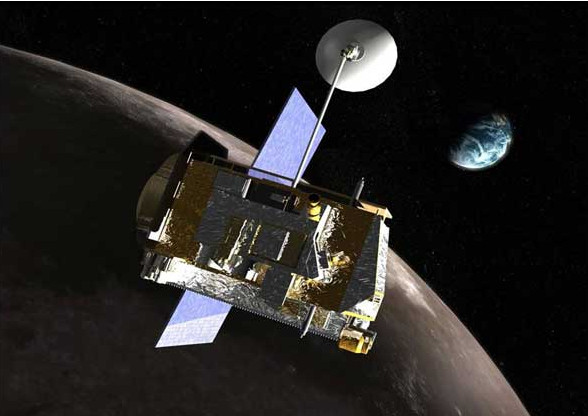Moon eclipse NASA's satellite threat
The real superhuman event that will take place next Sunday will likely threaten one of NASA's important exploration tools.
The real moon can affect the LRO probe
According to The Independent, when the Earth obscures the Sun, causing the Moon to sink into darkness on September 27, we will just be able to admire the magnificent total eclipse, just witnessing the phenomenon of super moon, called blood moon. But this is also a difficult time for the Moon Exploration Satellite (LRO) of the US Aerospace Agency (NASA). Temperature and light will drop significantly, which can cause it to stop working.
Not all spacecraft can overcome the temperature drop and lack of light when the eclipse occurs. NASA's Lunar Dust and Atmospheric Environment (LADEE) probe, which was designed to perform a 100-day mission in a non-lunar cycle, was nearly disabled during the eclipse in April. / 2014.

LRO simulation.(Photo: NASA).
In contrast, the LRO can withstand hours of low temperatures and lack of light. The LRO has passed three eclipses safely in the past 1.5 years. On September 28, when we were contemplating the blood moon, the LRO would switch to a special mode, it would disconnect and go into a state of "hibernation" to survive the cold and dark flight.
"We have a solution and it works," said Dawn Myers, a science planner at NASA's Goddard Aeronautics Center. "It's always tense when the lunar eclipse comes near, but we always follow the default process and haven't encountered any trouble."
The LRO will start again the next morning and the team of scientists will observe and follow up within the next 24 hours to make sure it works well.
"Hibernation" is the key to helping satellites overcome eclipse. It is also a great time to test some of the LRO's new abilities that help clarify the secrets of the Moon. Diviner, the device on the LRO, is a radiometer, which can measure reflected energy from the surface of the Moon and infrared emissions that help determine the surface temperature.
"Our electrical engineer observed previous eclipses and evaluated the feasibility of turning on this device to work during the eclipse , " Myers said. "He told us that if the voltage drops below a certain level, we have to turn off the device, but that hasn't happened yet."

Keeping Diviner active when the lunar eclipse takes place will provide useful information.
"The cooling of the lunar surface during lunar eclipses helps us know how the other high points on the Moon cool down compared to a normal moon night , " Noah Petro, another scientist of NASA said. "From there we can study the particle size at the surface".
The LRO departs on June 18, 2009 to carry out a two-year mission. Up to now, it has operated to the 6th year and is expected to continue operating until October 2016.
Video of NASA about the phenomenon of blood moon and super moon:
- Eclipse image from the universe
- Vietnam did not observe the first solar eclipse of the year
- Vietnam: Many places do not see the half-moon eclipse
- Eclipse, eclipse appeared in November
- Video: Standing at the Moon watching the full lunar eclipse
- The first live video of the
- How did the ancients 'deal' with the blood moon?
- When will Vietnam observe the next eclipse?
- Video: Total eclipse on Mars
- What is super moon? When will Vietnam receive Super Moon?
- Photo of Earth when eclipse occurred from the Moon
- Decoding eclipse phenomenon, eclipse appears in the month
 Van Allen's belt and evidence that the Apollo 11 mission to the Moon was myth
Van Allen's belt and evidence that the Apollo 11 mission to the Moon was myth The levels of civilization in the universe (Kardashev scale)
The levels of civilization in the universe (Kardashev scale) Today Mars, the sun and the Earth are aligned
Today Mars, the sun and the Earth are aligned The Amazon owner announced a secret plan to build a space base for thousands of people
The Amazon owner announced a secret plan to build a space base for thousands of people This Abundant Mineral on the Moon Could Power Humanity for Thousands of Years
This Abundant Mineral on the Moon Could Power Humanity for Thousands of Years  The Strange Disease That Affects Everyone Who Has Ever Set Foot on the Moon
The Strange Disease That Affects Everyone Who Has Ever Set Foot on the Moon  What would a day on the Moon be like for astronauts?
What would a day on the Moon be like for astronauts?  First photo of Mars' strangely shaped moon
First photo of Mars' strangely shaped moon  The biggest supermoon of the year is about to light up the world's skies
The biggest supermoon of the year is about to light up the world's skies  New research shows that Earth has a new 'Moon'
New research shows that Earth has a new 'Moon' 